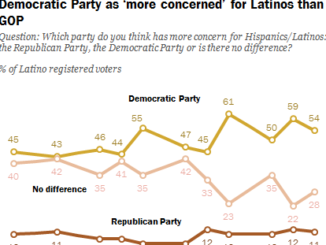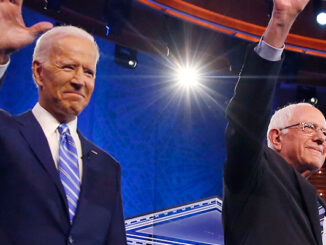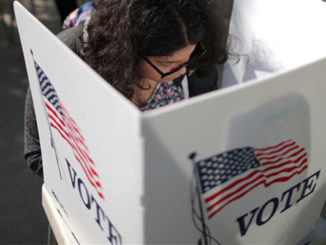
Nonwhite babies are now a majority. How might this demographic shift affect America’s voting pool down the road?
By Stephanie Czekalinski
Eighteen years from now, infants and toddlers of color will become the majority eligible to vote, possibly changing the traditional American electoral landscape.
For the first time, most of the babies born in the U.S. are members of minority groups, according to Census Bureau numbers released on Thursday. The report is a harbinger of a future in which whites are no longer the majority of Americans.
Population estimates show that in 2011, 50.4 percent of children under 1 were Hispanic, black, Asian, or of another ethnic minority group, up from 49.5 percent in 2010.
What impact this change will have on politics and the national agenda is anyone’s guess. But in 2028, when many of those children will become eligible to vote for the first time, the lines at the polls will look different than they have at any time in U.S. history.
Five years before they head to the polls to vote in their first vote for president, the majority of children in the U.S. will be minorities, according to the census data. The total population will follow suit in 2042. By 2050, non-Hispanic whites will be the minority, representing 46 percent of the population.
Some have speculated that the demographic shift will hand Democrats a political advantage.
That could happen, said Sean Trende, senior elections analyst for RealClearPolitics, but a lot can change in the next 16 years.
 Consider Hispanics: “The voters who have the strongest ties to Mexico are the ones that are heaviest Democratic,” he said. As time passes, and the children and grandchildren of immigrants move up the socioeconomic ladder, their priorities may change and they may start voting Republican, balancing out the electorate.
Consider Hispanics: “The voters who have the strongest ties to Mexico are the ones that are heaviest Democratic,” he said. As time passes, and the children and grandchildren of immigrants move up the socioeconomic ladder, their priorities may change and they may start voting Republican, balancing out the electorate.
It’s also possible that the parties’ positions will evolve.
The Democrats’ priorities may shift as minorities throw their support behind them, Trende said. If those priorities are not in line with the values of white progressives, those white voters may migrate to the Republican Party.
Whatever the changes, the driving forces will go beyond race, said Michael D. Hais, coauthor of two books on the millennial generation.
In 2028, some Baby Boomers—the oldest born in 1946—will have reached their 80s. Rachel, from the famous Generation-X sitcom Friends, will be pushing 60. And the status updates (if such things still exist) of oldest millennials, born in 1982, will read “Happy 46th Birthday.”
If these generations continue to vote as they have in the past, Boomers and Generation X-ers will remain pretty evenly split between Republicans and Democrats, he said.
Millennials, the largest generation numerically at 92 million, lean left on many issues, which would seem to favor Democrats, Hais said. But not all of them have begun to vote yet, so it’s difficult to know how they will ultimately split.
No one knows how today’s toddlers—born into the “plural generation”—will vote in 2028. Their beliefs and political affiliations will be determined by history that’s yet to be written.
Their voting patterns will be influenced by more than their youth, said Ruy Teixeira, a senior fellow at the Center for American Progress.
“The thinking that because they’re young they’re destined to be liberal is not true,” he said.
In 2028, Boomers will still be a forced to be reckoned with, said William Frey, senior fellow and demographer with the Brookings Institution.
 Although the youngest voters will be infusing the electorate with diversity, there will still be a large number of older people who are not as diverse, he said. But the differences between the way those groups vote could be driven more by age than by race.
Although the youngest voters will be infusing the electorate with diversity, there will still be a large number of older people who are not as diverse, he said. But the differences between the way those groups vote could be driven more by age than by race.
“Having an aged population of considerable size will bring up a whole set of issues that will diverge from the kinds of needs that these younger people will have,” Frey said.
The demographic changes reflected in the Census Bureau release yesterday confirm a trend that social scientists and demographers have been watching for years, Teixeira said.
The minority share of the population has been increasing by about a half a percentage point a year, he said.
Four states and the District of Columbia had a population in 2011 in which more than 50 percent were of minority groups: Hawaii (77.1 percent minority), D.C. (64.7 percent), California (60.3 percent), New Mexico (59.8 percent), and Texas (55.2 percent), according to the census data.
this article appeared on the National Journal on 5/20/12



